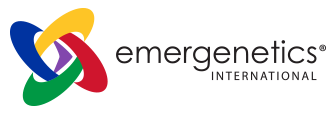
A thriving workplace doesn’t exist by accident. It requires intentional effort and strategy. In partnering with Human Resources and Employee Engagement professionals, I’ve observed a few patterns in what often contributes to an unproductive climate as well as the solutions that have helped organizations re-energize their environments. Let’s explore a few common challenges and the practical tools Emergenetics® Associates can use to mitigate them.
3 Frequent Contributors to Poor Work Culture
When I’m helping a client transform a disengaging culture, I regularly hear about three obstacles:
- Workload is beyond capacity
- Appreciation and rewards are lacking
- Expectations and roles are unclear
Depending on the issue, Associates should consider the following tactics.
#1 – Manage Workloads More Effectively
If personnel are often faced with an insurmountable number of tasks, it not only affects their morale – it can also impact their health. Working more than 55 hours a week leads to an increased risk of stroke, heart disease, anxiety and depression! Associates can empower people leaders to rebalance workloads by coaching them to consider Profiles when delegating tasks.
➡ Align deliverables with Attributes
When an assignment energizes staff, they tend to work more efficiently. Associates can provide the following questions to managers to help them engage teammates in fulfilling work:
- Can I assign this task to an employee whose preferences align with the nature of the project (assuming the assignment falls under their scope of responsibility and competency)?
- How can I create space for my direct reports’ preferred work style within the parameters of the deliverable?
Sometimes, people leaders need to assign projects that may be de-energizing to individuals based on their Emergenetics Profile. When doing so, they can still support the person and see successful outcomes by:
- Presenting the task in a way that still aligns with both their Thinking and Behavioral preferences
- Pairing them with a thought partner who is likely to get energy from the task at hand and can offer considerations to improve execution
- Allowing the team member to approach the task in a way that honors their preferences
- Extending the deadline to ensure the employee can take more mental breaks to stay engaged
Associates: Login to Emergenetics+ and download our Identifying Stress in Others resource to coach managers on how they can recognize and respond to fatigue with their direct reports.
#2 – Amplify Recognition in a Meaningful Way
85% of professionals want to hear “thank you” in day-to-day interactions. Expressing your gratitude is a great start, and by creating a culture of appreciation, trust and engagement are likely to increase for the entire workforce. Promote celebrations with consideration for the Emergenetics Attributes.
➡ Provide acknowledgment based on preferences
Recognize teammates in ways that connect to their motivations. Login to Emergenetics+ and download our Attributes in Action guide on Receiving Recognition to uncover how to honor each Thinking and Behavioral Attribute and share it with staff.
If you don’t know a teammate’s Profile, teach employees to apply the following WEapproach when giving appreciation:
- Explain the value of the person’s efforts
- Be specific about what actions they took
- Share which stakeholders their contributions positively impacted
- Make connections to the big picture
Also, invite them to consider whether a team member thrives in large or small group settings to determine if they’d prefer praise be shared in an email or a meeting.
Associates: Advise leaders to facilitate a WEboarding session for their teams to have a more in-depth discussion about how each team member prefers to show and receive acknowledgment. For instructions, read my blog here.
#3 – Clarify Expectations to Reduce Uncertainty
According to Gallup, in 2024 less than half of US employees knew what was expected from them at work, and to have higher levels of employee engagement, workers need to clearly understand what their responsibilities are. Associates: Increase understanding by introducing managers to their team’s Group Profile and Summary.
➡ Review the Group Profile and Team Dot Graph
Give team leads a copy of their Profile, their staff’s Group Profile and the combined Team Dot Graph with the leader’s Percentile Scores circled. After providing the materials, meet with the manager to discuss the following prompts:
- What insights do you have about your team by looking at these reports?
- How does this team want to receive communication from you?
- How will you personalize your approach with the team and individuals based on their results?
It’s also useful to provide the same reports and questions to the group as a whole to discuss what their leader may be looking for from them and how they can better collaborate with one another. Include the manager in this discussion to hear directly from personnel.
Associates: To identify what else may be causing intent-impact gaps, share the Burning Questions of the Emergenetics Attributes with teams to support alignment and clarify what queries each employee typically have that may be left unanswered.
While each of these challenges requires effort to address, Emergenetics can serve as an actionable guide to reimagine workload distribution, promote appreciation and create the clarity direct reports seek from their managers. Through these actions, you can cultivate a culture that supports staff and enhances their engagement and productivity.
Ready to take the next step? Download our guide, 8 Essentials to a Healthy Work Culture to discover more ways to positively transform the workplace!
Or, fill out the form below to speak with one of our team members about how we can help you strengthen your corporate climate!
 Print This Post
Print This Post

